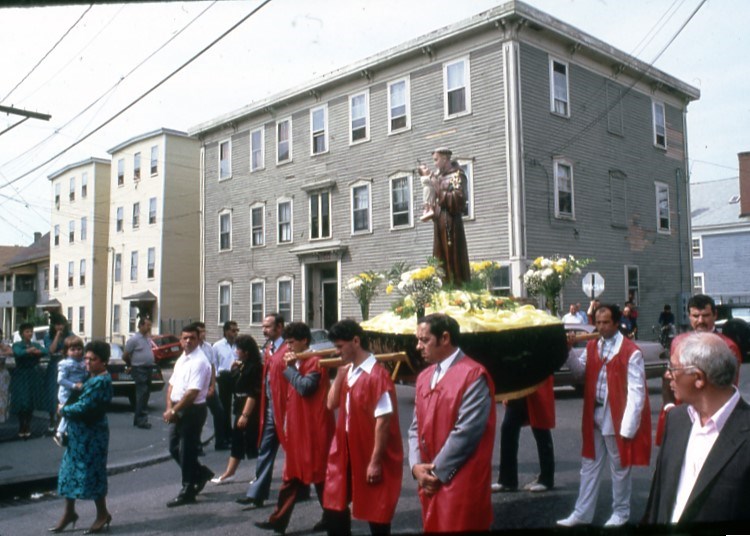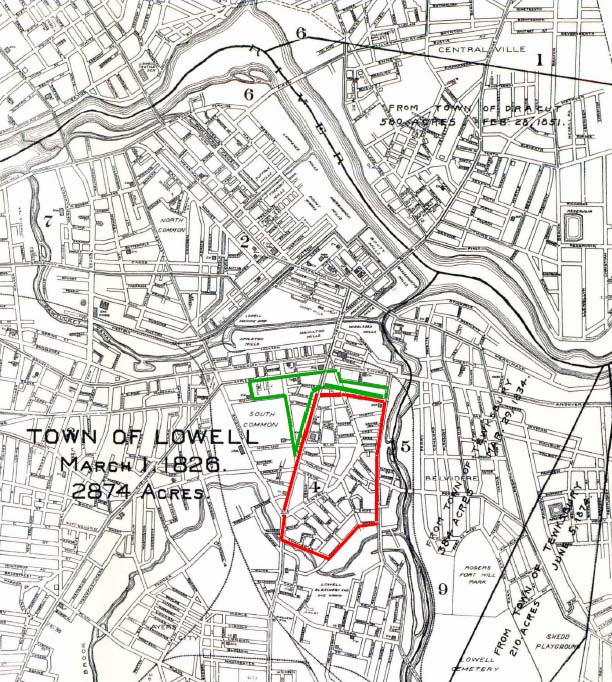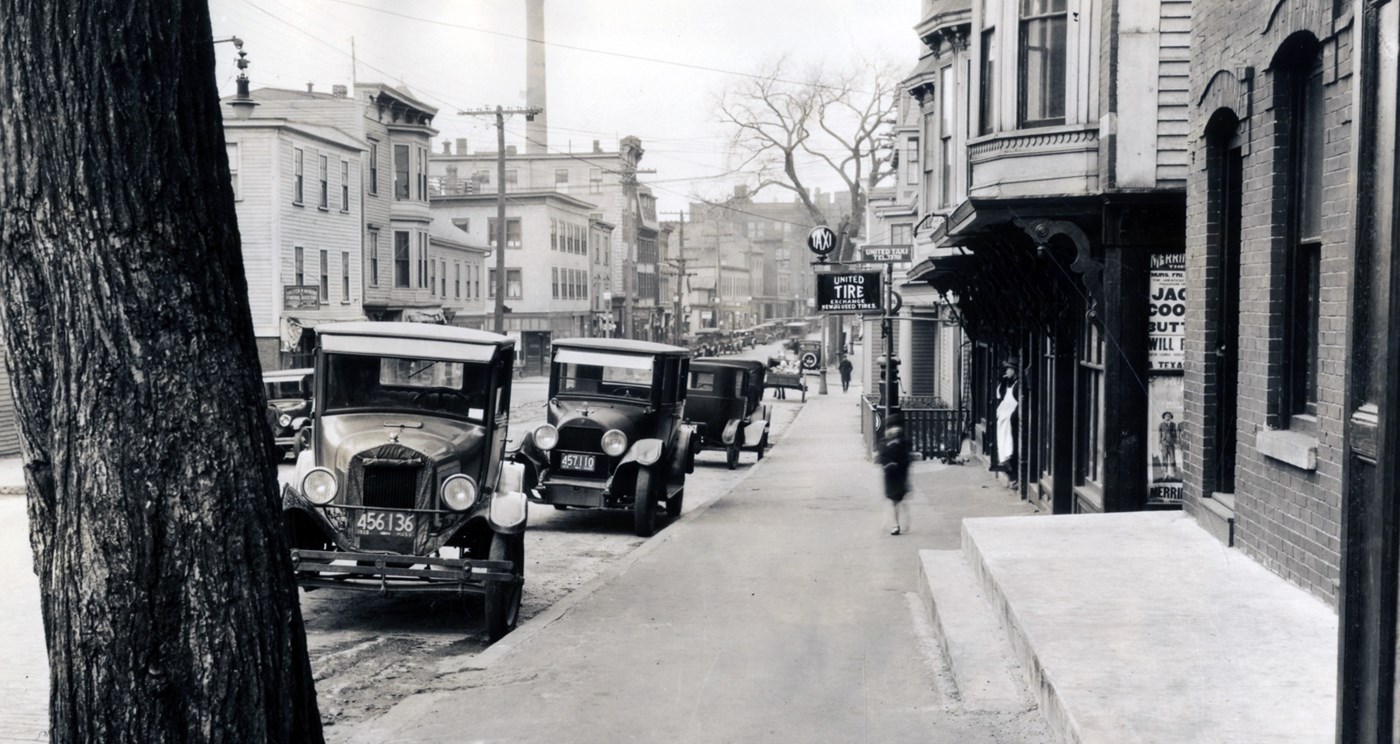 Image by UMass Lowell, Portuguese American Digital Archive
Image by UMass Lowell, Portuguese American Digital Archive
Since the early 1900s, Lowell’s Back Central has been considered the city’s premier Portuguese neighborhood. Located a short distance south of the downtown, this area possesses a rich history and culture. It was originally a suburb of the leading cotton manufacturing center of the United States but emerged after the Civil War as an increasingly urban and densely populated immigrant neighborhood. For nearly 50 years a large number of the city’s Irish lived here in the various tenements multiple-family homes, and single-family residences. But by 1910, Back Central was home to a markedly diverse array of nationalities, including Russians, Poles, Lithuanians, Armenians, Syrians, French Canadians, and Portuguese.
It was the Portuguese, primarily Azoreans, however, that formed the largest immigrant community in this locale. A majority belonged to St. Anthony’s Church, the city’s sole Portuguese-Catholic parish, located in the heart of Back Central. The church and its affiliated organizations, along with Portuguese social clubs and businesses, not only fostered Portuguese culture but helped newcomers adjust to life in this new, foreign environment.
Prior to 1924 and the passage of the most restrictive federal immigration law in the nation’s history, Back Central’s Portuguese population topped the 5,000 mark. Over the following 25 years the number of Portuguese declined, but the Azorean Refugee Act (1957) and a less restrictive federal immigration bill (1965) resulted in a significant increase in Lowell’s Portuguese residents. This also led to a renaissance within Back Central’s Portuguese culture and community. In more recent years, the neighborhood has experienced shifts in the local economy as well as demographic change. While Back Central retains its strong association with Portuguese, past and present, the transitions underway raise questions as to the neighborhood’s cultural identity in the years to come.
To document the history, culture, and social change in the Back Central neighborhood UMass Lowell’s Saab Center for Portuguese Studies is leading an interdisciplinary initiative comprising three major parts:
- a history of the neighborhood and its residents;
- a documentation and analysis of the neighborhood’s architecture, its arts and crafts, and its landscapes; and
- an urban survey of current residents to understand their perceptions of the neighborhood today.
Funding for this effort has been provided by a seed grant from UMass Lowell’s Office of Innovation and Research. Importantly, the Back Central Project is being carried out in conjunction with UMass Lowell Libraries’ newly established Portuguese American Digital Archive, funded by a generous grant from the William M. Wood Foundation of Boston.

The area of this 1914 map of Lowell encompassed within the green lines is the section of the city that was called the “Portuguese colony” in the early 1920s. The study area of the Back Central Project is shown within the red lines. (Source: The 1914 map is from the Center for Lowell History)

